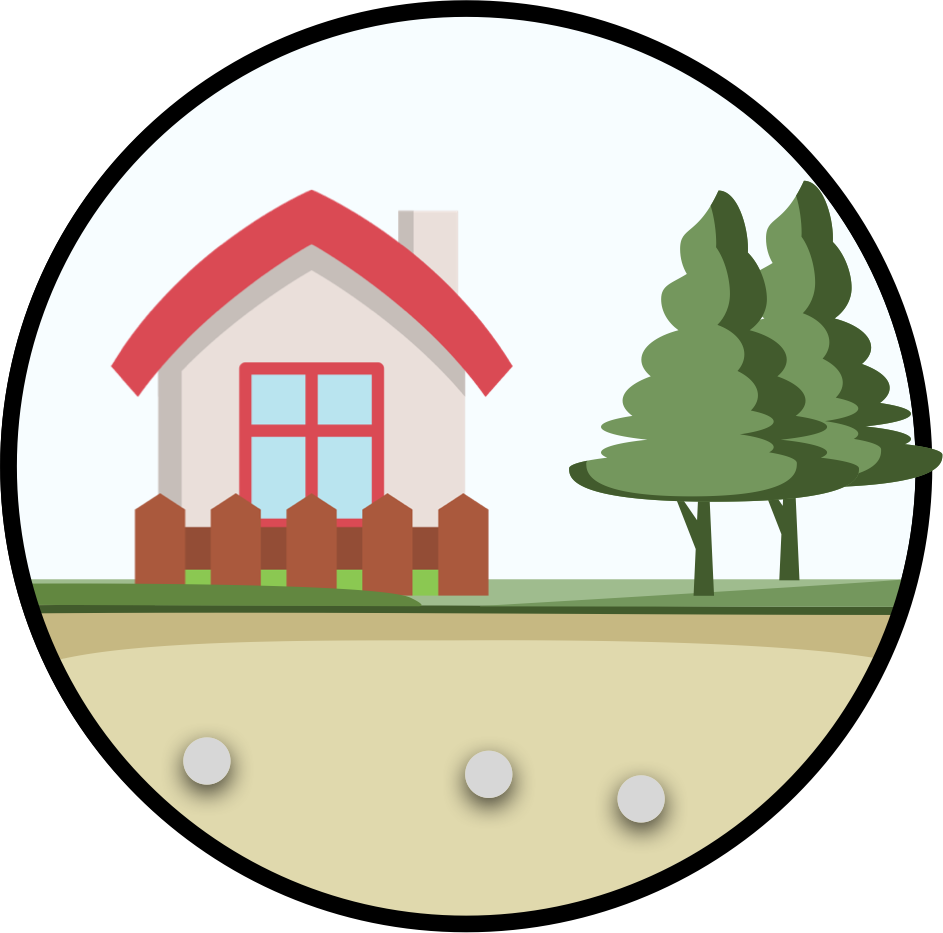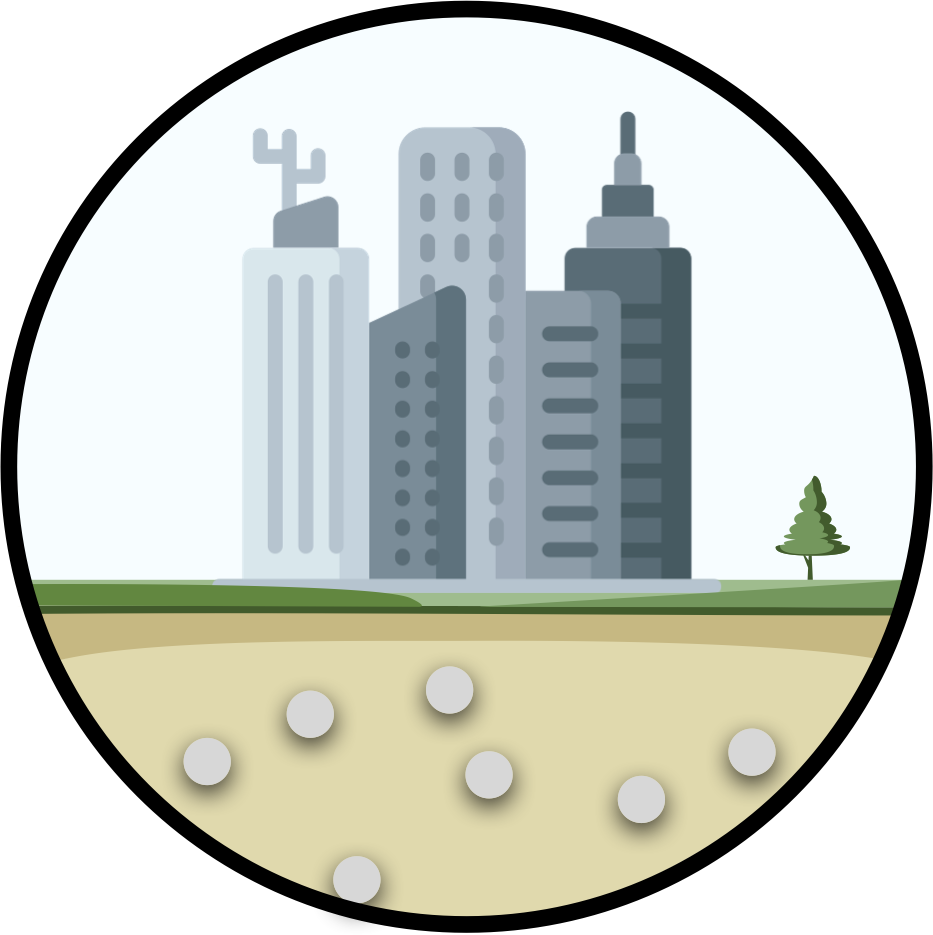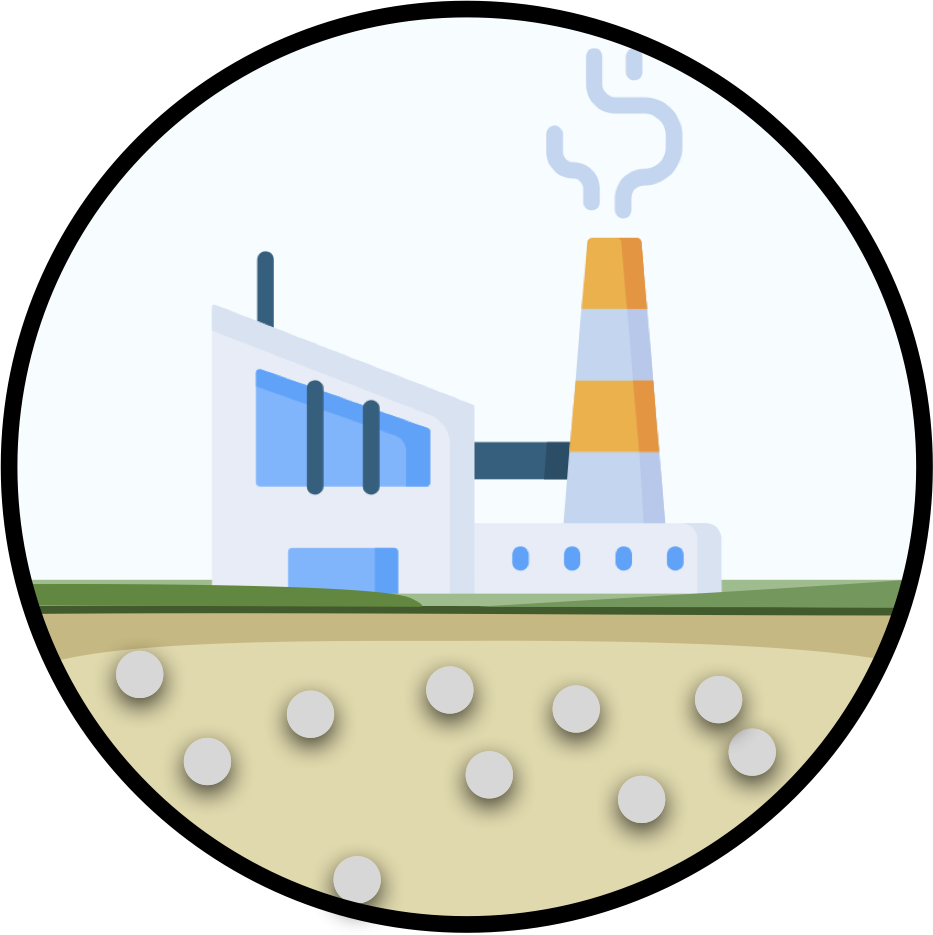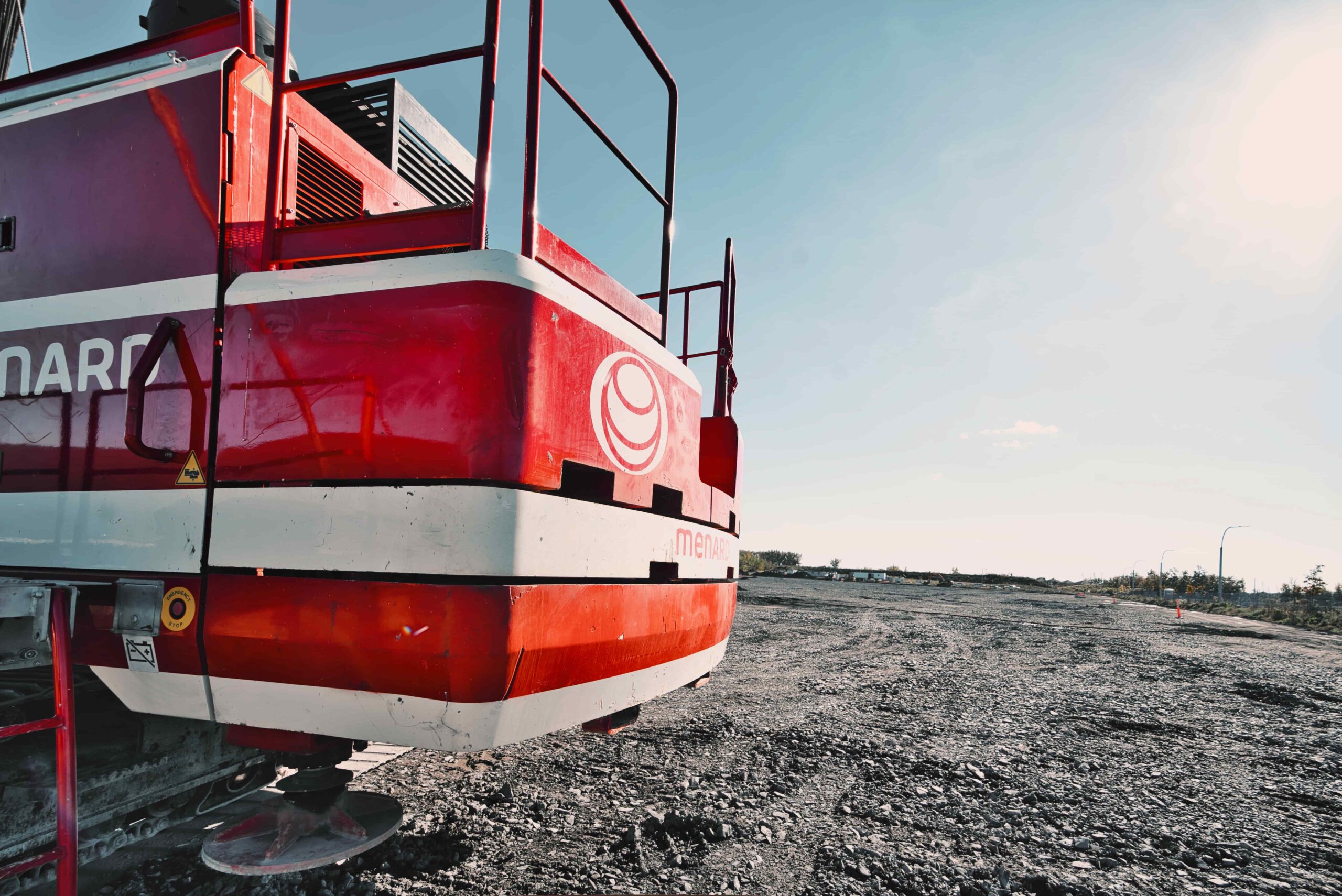How we overcome remediation challenges
From “waste” to resources. In remediating a site, REMEA is an environmental contractor that helps clients in overcoming the remediation challenges that typically limit the amount of materials that can be reuse rather than sent to landfills.
Three steps to building a site-specific remediation solution
Step 1. What are the remediation objectives and acceptable risks?
Setting protection goals are central to assessing and overcoming environmental remediation challenges. This means asking the question: what type of risk the site can accept once it has been restored?
By anticipating the site’s future use (such as residential, commercial, industrial…) we can help lower costs by engineering a remediation cleanup option that follows provincial use-type regulations. In most provinces, environmental regulations are designed based on risk associated with various use types.
(high risk)

Residential
Areas where people live and spend a lot of time on the site.
(medium risk)

Green spaces
Areas like parks where people frequently enjoy outdoor recreational activities.
(mild risk)

Commercial
Areas where people are in contact with the soils during a limited window (ex.: business hours).
(low risk)

Industrial
Areas where safety controls limit access and contact with the soils (ex.: fences) during the day and night.
The soil is a resource that should be preserved
REMEA are experts in overcoming remediation challenges by installing the required engineering controls (ex.: barriers) that are necessary for your site to meet the province’s institutional controls (ex.: legal/administrative).
Step 2. Where is the contamination and where is it going?
If a the site has not yet been audited (Phase II ESA), we can collaborate with our sister company (www.conetec.com) to properly characterize and delineate pollution source and its spread. This second step is vital in developing a site-specific remediation strategy aimed at overcoming remediation challenges. Here, we ask the following questions:
Are the contaminants sticking to soil?

Will we need to remediate groundwater?

Step 3. What type of contaminants are present?
Inorganic contaminants
Inorganic metals, metalloids and non-metals are usually of natural origin and tend to become problematic when human activities contribute to the concentration of these compounds in one area (ex.: mining, industrial production, agriculture, sewage…).
Organic contaminants
Organic pollution is typically a result of human activities but can also be produced via natural pathways (ex.: forest fires, volcanoes, fossil fuels…). Organic compounds often synthesized to be resistant to degradation – thus persistent in the environment.
Restoring our environment

Our promise is to use REMEA’s global expertise in the management of environmental pollutants to find a remedial solution for any type of contaminant affecting your site.
Frequently asked questions (FAQs)
Think of a Phase II (or Phase 2) Environmental Site Assessment (ESA) as due diligence a client must complete before restoring a contaminated site. In Canada, this remediation challenge (or step) is mandated by the Project Lead (or client) and typically completed by consulting firms. A Phase II ESA is the only sure way of knowing if your site is polluted is to test the samples of soil and water for contamination (at the surface, and at depth).
Once collected, soil and groundwater samples are typically sent to a third-party analytical laboratory for analysis. This traditional method can be cross-referenced with other innovative investigation techniques such as high resolution site characterization (HRSC) and cone penetration testing (CPT).
These cost-effective techniques help rapidly define contaminant distributions with minimal disruptions to the site. Find more information on our sister company’s website (www.conetec.com).
The objective of a Phase II ESA is to define/delineate the location of contaminants in the Project Area, and to assess if contaminant concentration meets applicable guidelines. The resulting report should include remediation options that can be used to restore the land.
